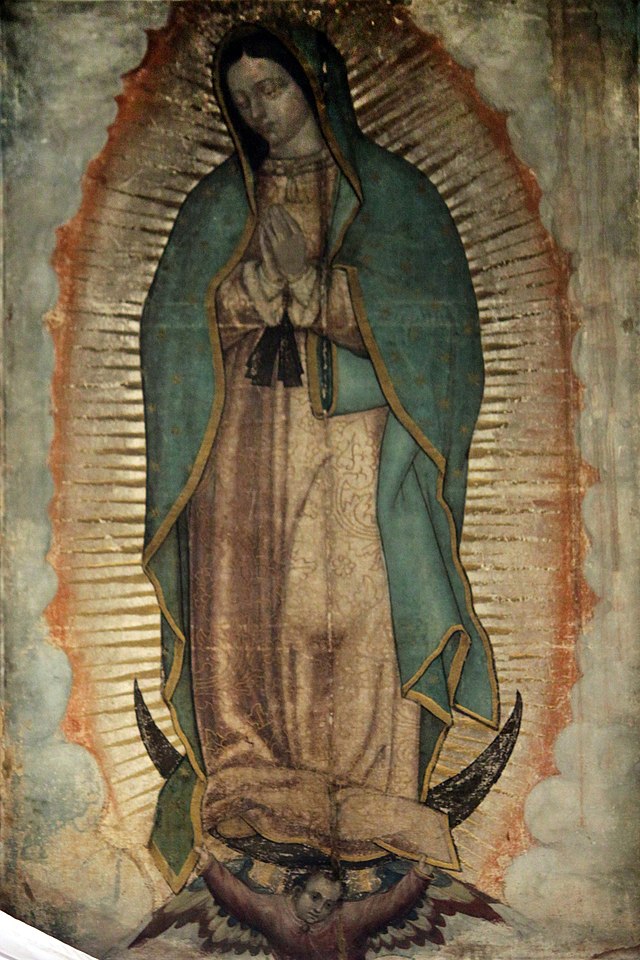
Our Lady of Guadalupe (Spanish: Nuestra Señora de Guadalupe), also known as the Virgin of Guadalupe (Spanish: Virgen de Guadalupe), is a title of the Virgin Mary associated with a celebrated pictorial image housed in the Basilica of Our Lady of Guadalupe in México City. The basilica of Our Lady of Guadalupe is the most visited Catholic site in the world, and the third-most visited sacred site in the world.[1][2]
Official Catholic accounts state that on the morning of December 9, 1531, Juan Diego saw an apparition of a maiden at the Hill of Tepeyac, in what would become the town of Villa de Guadalupe in the suburbs of Mexico City. Speaking to him in the native Nahuatl language, the maiden asked that a church be built at that site in her honor; from her words, Juan Diego recognized the maiden as the Virgin Mary. Diego recounted the events to the Archbishop of Mexico City, Fray Juan de Zumárraga, who instructed him to return to Tepeyac Hill, and ask the "lady" for a miraculous sign to prove her identity. The first sign was the Virgin healing Juan's uncle. The Virgin told Juan Diego to gather flowers from the top of Tepeyac Hill, where he found Castilian roses, not native to Mexico, blooming in December on the normally barren hilltop. The Virgin arranged the flowers in his tilma or cloak, and when Juan Diego opened his cloak before Bishop Zumárraga on December 12, the flowers fell to the floor, and on the fabric was the image of the Virgin of Guadalupe.[3]
The image on the tilma has become Mexico's most popular religious and cultural symbol, and has received widespread ecclesiastical and popular support. In the 19th century it became the rallying call of American-born Spaniards in New Spain, who saw the story of the apparition as legitimizing their own Mexican origin and infusing it with an almost messianic sense of mission and identity - thus also legitimizing their armed rebellion against Spain.[4][5]
Although the former curator of the basilica Monsignor Guillermo Schulemburg, have doubted the historical existence of Juan Diego and "had sent a letter to the Vatican's Congregation for the Cause of Saints disputing whether Blessed Juan Diego ever existed and objecting to plans for canonization. [...] Father Oscar Sanchez, in charge of Juan Diego's cause, [...] said that Father Schulenberg and two other priests who signed the letter have "zero credibility .... They have no authority." [6] Juan Diego was canonized in 2002, under the name Saint Juan Diego Cuauhtlatoatzin.
No comments:
Post a Comment